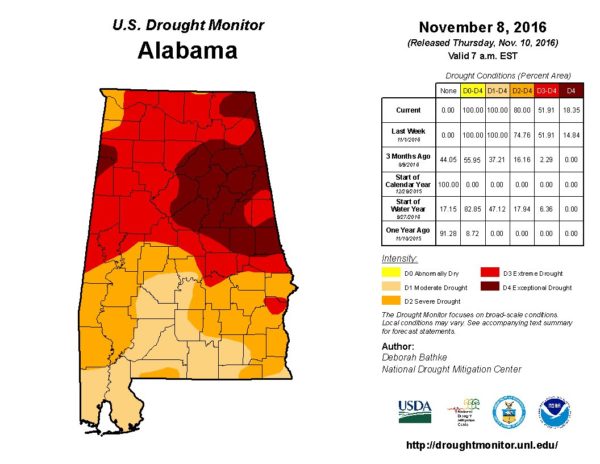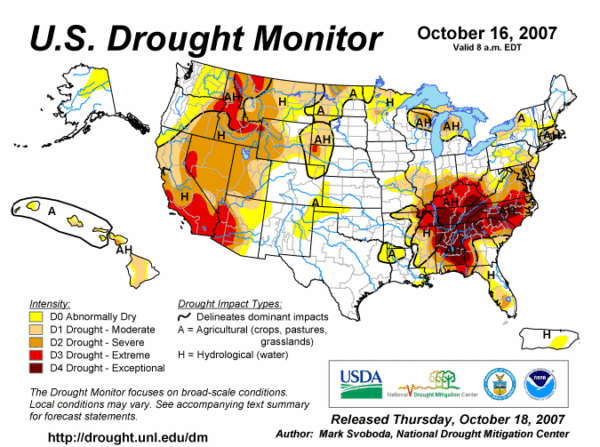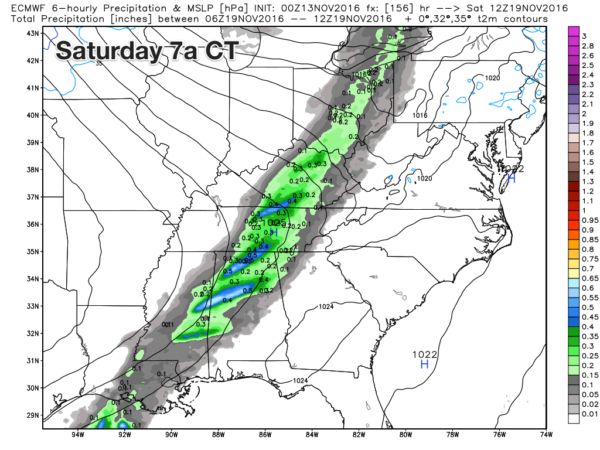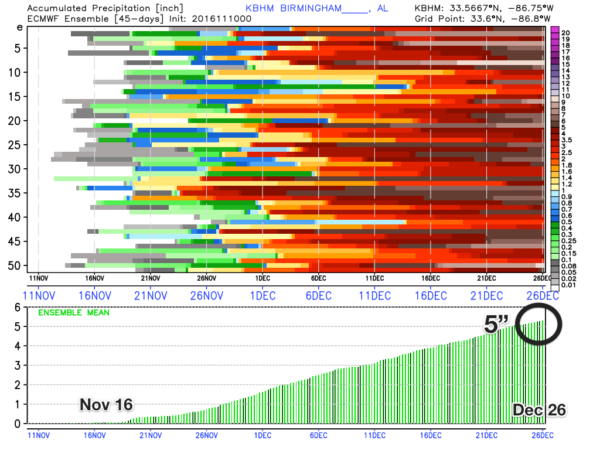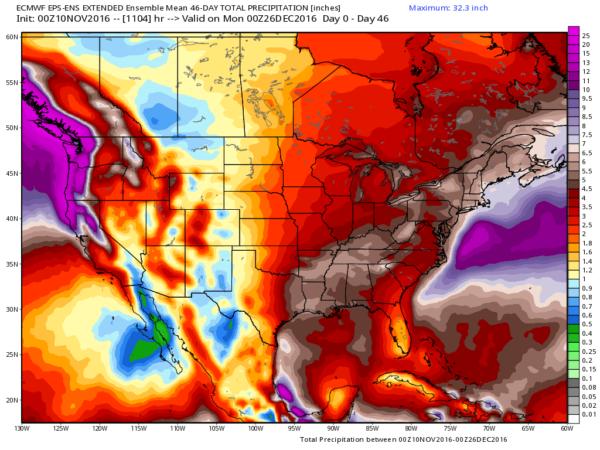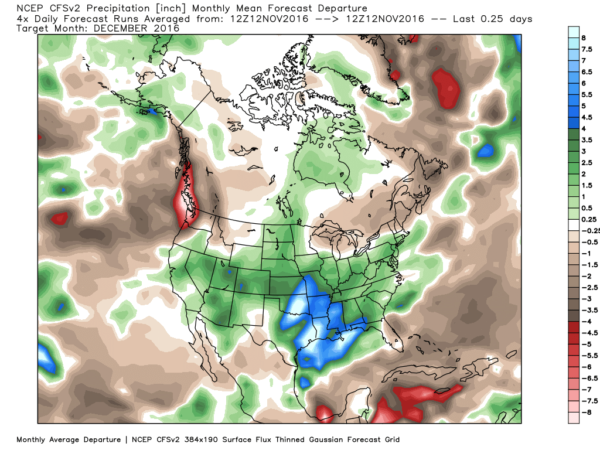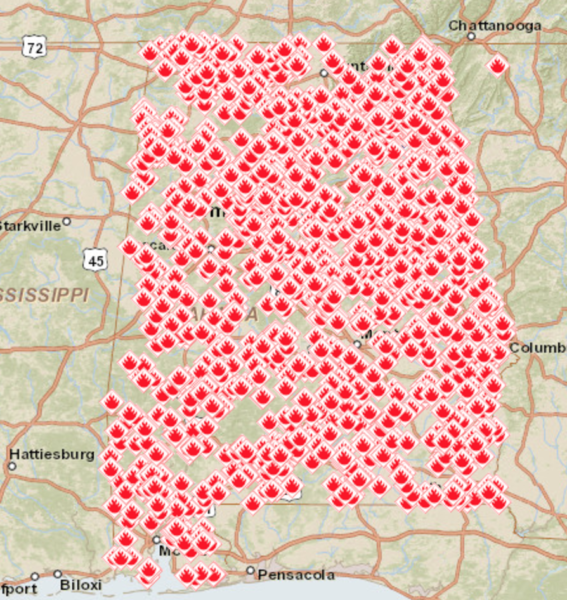Drought Update – November 13
This is an update on the current drought situation in Alabama, with updated information as of Sunday November 13.
IT HAPPENS: Droughts have always happened, and they will always happen. Like severe storms, floods, hurricanes, and tornadoes. They are a normal component of the climate system. I have worked many of them in my 38 years as a broadcast meteorologist.
THE FEEDBACK LOOP: The late J.B. Elliott, long time National Weather Service meteorologist and my mentor, had a saying… “droughts beget droughts”. We have been under an upper ridge since summer, deflecting the major rain producing systems away… and as the soil moisture vanishes and plants and vegetation begin to die, there is less water available for evaporation from the soil surface, meaning less water available for transpiration. Basically a nasty feedback loop, meaning no moisture available for waves and boundaries that pass through. It makes it very hard to break out of these things.
LONGEST DRY SPELL ON RECORD: Let’s review the current situation. Data below is from Birmingham-Shuttlesworth International Airport, where the “official” records are kept. Understand, your rain amounts could be different, but we use this one spot as a reference.
Birmingham’s rain total for the month of October was just a trace (that trace came on October 16); the last measurable rain was on September 18 with 0.32″. The last time we had over one inch in a 24 hour period came on July 30, when the total was 1.33″. No rain has been measured so far in November.
We have gone, counting today, 56 consecutive days without measurable rain. In recent days we blew past the record of 52 dry days in a row set in 1924.
This week’s drought monitor shows that 52 percent of Alabama is in an “extreme” or “exceptional” drought condition…
OUR DROUGHT HISTORY: There are two type of droughts… short term droughts last for weeks and months (which we are in now), and long term, which last for several years.
A good analog to this drought, which is “short term”, came in 2007, when about 75 percent of the state was in an “exceptional” short term drought…
Concerning “long term” droughts, Alabama has had five major ones since record keeping began: 1929-32, 1938-45, 1950-63, 1980-82, and 1984-88.
CLIMATE CHANGE? The climate is changing. Always has, always will. Unfortunately, this subject has become politicized, and with the current deep division in our country it is hard to discuss without ideologues with no understanding of how the atmosphere works diving in. Left wing and right ring activists say things with no regard for the truth in an effort to align themselves with a political candidate. Science and politics are a very bad mix. See this essay I wrote two years ago.
Seager et al had an excellent peer reviewed paper after the 2007 drought (you can see the full paper here), and concluded “the post 2005 drought therefore appears to have been caused partly by atmosphere-ocean climate variability and partly by internal atmosphere variability, all of which is typical of what has been happening in the region for hundreds of years. The serious stress the drought put on social and agricultural systems in the region came about purely due to lack of adequate planning based on knowledge of regional climate variability.”
See historical data on U.S. wildfires here.
FYI… there is an “Alabama Drought Management Plan”… you can read it here.
WHEN DOES IT END? Will this turn into a long term drought, like 1938-45? Or, will it end like 2007 in a relatively short term fashion?
Our next chance of rain comes at the end of this week when a cold front passes through Alabama. Understand this is no drought buster, and no really big rain event. But, it is a start.
Main window for rain comes from about midnight Friday night through 12:00 noon Saturday. Some thunder is possible, but this is not a severe weather setup, and unfortunately rain amounts should be under 1/2 inch.
In the longer term, understand there is no specific skill in a weather forecast beyond seven days, but there is some skill in pattern recognition, and the usually reliable European global model (the ECMWF), and the ensemble approach, suggests an active December, with several good rain producers, and potential for over five inches of rain.
We note the CFSvS (Climate Forecast System model, version 2) also has trended wet for December…
After the 1924 drought (the old record for consecutive dry days), December 1924 was very wet with 6.89″ at Birmingham. Let’s hope the same thing happens this time.
ENDING UGLY? We note that many short term droughts in Alabama tend to end “with a bang”… sometimes with flooding or a severe weather outbreak, followed by very cold weather. Not saying it will happen this year, but we need to watch all of this unfold since we are now in the severe weather season.
PLEASE: Let’s do all we can to conserve water; the Birmingham Water Works is now at a “Stage 4 – Extreme Drought Emergency:… read more here.
And, NO outdoor burning. NO cigarette butts out the window. As of this morning, 1,651 wildfires have been reported in Alabama since October 1 (data from the Alabama Forestry Commission)
All droughts do end… and I do believe we can see the light at the end of this tunnel…
Category: Alabama's Weather

